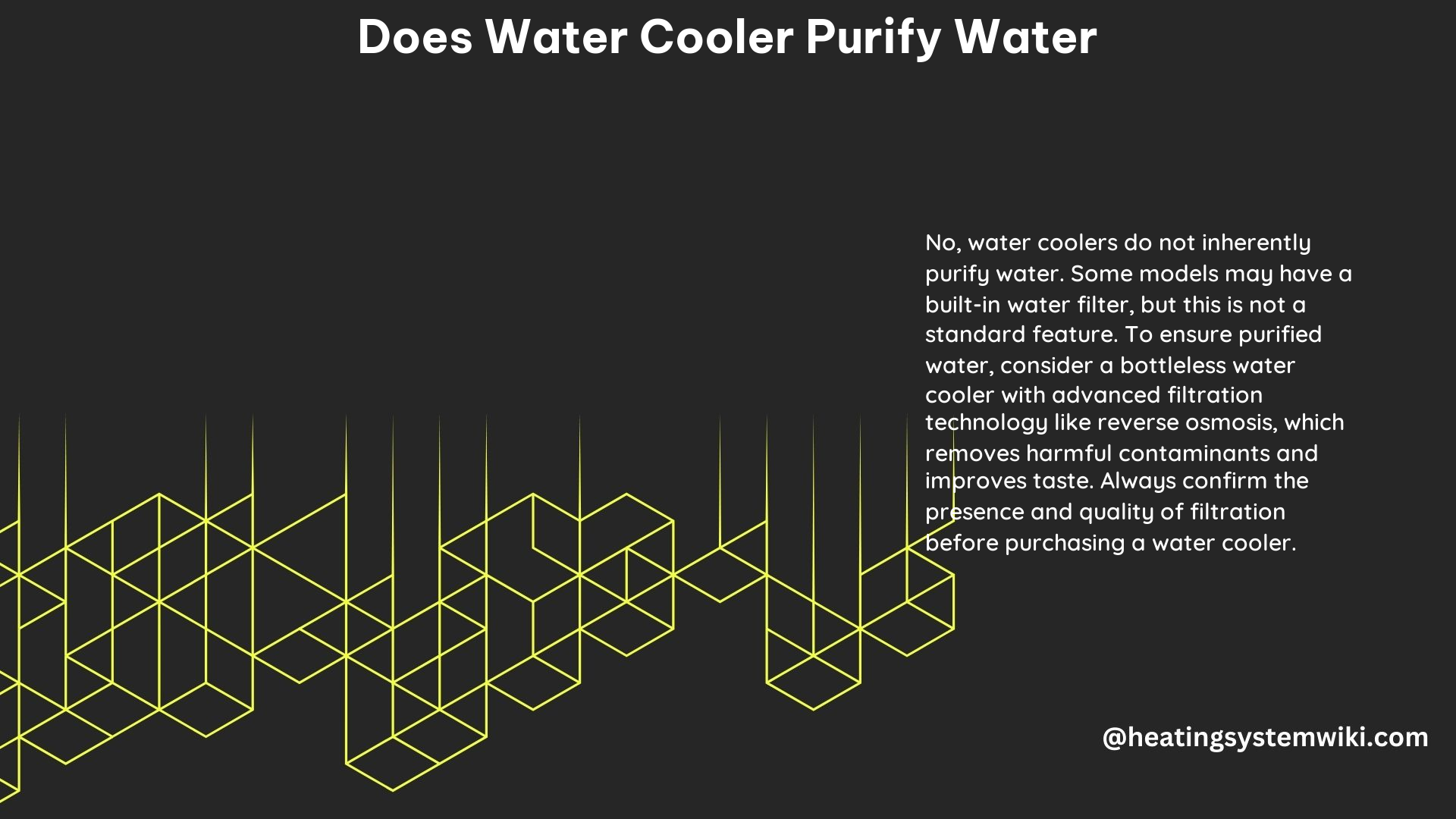Water coolers have become a ubiquitous fixture in many workplaces, homes, and public spaces, providing a convenient source of chilled drinking water. However, the question of whether water coolers actually purify the water they dispense is a common concern among users. In this comprehensive guide, we’ll delve into the technical details of water cooler filtration systems, their efficiency, and the steps you can take to ensure your water cooler delivers the purest drinking water possible.
Understanding Water Cooler Filtration Systems
Water coolers can be broadly categorized into three main types: benchtop water coolers, plumbed-in water coolers, and bottleless water coolers. The level of water purification provided by these coolers can vary significantly, depending on the specific features and filtration systems they incorporate.
Benchtop Water Coolers
Benchtop water coolers are the most common type of water cooler found in homes and small offices. These units typically draw water from a removable bottle or reservoir and may or may not have built-in filtration systems. Some benchtop models come equipped with basic carbon filters, while others rely solely on the water source’s inherent quality.
Plumbed-in Water Coolers
Plumbed-in water coolers, also known as mains-fed water coolers, are connected directly to the building’s water supply. These coolers provide chilled water on demand, but unless they feature a dedicated filtration system, the water they dispense is essentially the same as the tap water from your building’s plumbing.
Bottleless Water Coolers
Bottleless water coolers, an increasingly popular option for workplaces, are plumbed directly into the building’s water supply. These coolers can be equipped with advanced filtration systems, including reverse osmosis and/or multi-stage carbon filtration, to provide purified drinking water on demand.
Technical Specifications of Water Cooler Filtration Systems

When it comes to water cooler filtration systems, the level of purification can vary significantly depending on the specific features and technologies employed. Here are some key technical specifications to consider:
Filtration Stages
High-quality water coolers with filtration systems often involve multiple stages of filtration to achieve the best results in removing harmful contaminants. These stages may include:
– Sediment filtration: Removes larger particles, such as dirt, rust, and sand.
– Carbon filtration: Removes chlorine, volatile organic compounds (VOCs), and other impurities.
– Reverse osmosis (RO): Removes up to 99% of over 1,000 contaminants, including lead, fluoride, and nitrates.
Filtration Efficiency
The efficiency of water cooler filtration systems can vary widely. For instance, reverse osmosis can remove up to 99% of over 1,000 contaminants, including:
– Heavy metals: Lead, mercury, cadmium, and chromium
– Inorganic chemicals: Fluoride, nitrates, and arsenic
– Organic compounds: Pesticides, detergents, and industrial solvents
Filter Lifespan
The lifespan of water cooler filters can range from 6 to 12 months, depending on the model and usage. Regularly replacing filters is crucial to maintain the effectiveness of the filtration system and ensure the continued purity of the water.
Water Quality Testing
Some water cooler models with filtration systems come equipped with water quality testing features, allowing users to monitor the purity and safety of their drinking water. This can be particularly useful in areas with known water quality issues or for those who want to ensure their water meets specific standards.
DIY Tips for Installing and Maintaining Water Coolers with Filtration Systems
Properly installing and maintaining a water cooler with a filtration system is essential to ensure the continued delivery of clean, safe drinking water. Here are some DIY tips to consider:
Installation
When installing a plumbed-in water cooler with a filtration system, it’s crucial to ensure that the water line is properly connected to the cooler. This may require the assistance of a professional plumber to avoid any potential leaks or damage to the unit.
Filter Replacement
Regularly replacing the filters according to the manufacturer’s recommendations is essential for maintaining the effectiveness of the filtration system. This typically involves turning off the water supply, draining the cooler, and replacing the filter cartridge.
Routine Maintenance
To prevent the buildup of bacteria and mold, it’s important to regularly clean the water cooler. This includes cleaning the exterior, interior, and water reservoir. Follow the manufacturer’s instructions for proper cleaning and disinfection procedures.
Conclusion
In summary, while not all water coolers are equipped with filtration systems that purify the water, some models do offer advanced filtration capabilities that can remove a wide range of contaminants. By understanding the technical specifications of water cooler filtration systems and following proper installation and maintenance procedures, you can ensure that your water cooler delivers the cleanest, safest drinking water possible.
